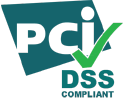When implementing a marketing plan for a credentialing program, hook your test candidates’ interest by marketing the outcomes of your certification. Your certification delivers value when it delivers an outcome. In this article, we will uncover how to market the value of your program, refine your marketing messages around your certification outcomes, and attract test candidates.
New certifications often make the mistake of casting as wide a net as possible, believing that the market consists of all professionals eligible for the exam.
But not all those who are eligible will be enthusiastic about the certification.
For example, practitioners in the mid- to latter stages of their careers may see no real benefit for getting certified.
The target market will always be a subset of the universe of eligible professionals.
It will be those for whom the certification offers the greatest value.
Here’s a painful dose of reality. Test takers don’t care about you or me, and they don’t really care about tests.
They care about outcomes.

Specifically, their own outcome, which springs from core desires that can include recognition, status, money or a fear of losing (or never getting) any of the above.
Your certification delivers value when it delivers an outcome.
To properly position your certification in the minds of your prospects, your value proposition must convince them that they’re moving toward an outcome that satisfies their desires.
To zero-in on your target market be sure to consider the following:
- Value. To what extent does the certification program fulfill the market’s unmet needs or pain points? What outcome does it deliver?
- Growth. Certificants are looking to grow in their careers, to ascend to a higher level of competency or significance. Does your marketing message include growth or advancement as an expected outcome?
- Competition. How is the outcome you deliver different than—better than—that of your competition?
- Congruence. Is the certification congruent with the credentialing program’s mission? If you’re the credentialing program’s sponsor, does certification contribute to the program’s higher purpose (e.g., rendering the best possible medical care or establishing best practices for professional conduct)?
Refining the Marketing Message
The message to be sent to the target market will constantly evolve as research reveals your prospects’ changing beliefs, motivations and needs relative to professional development in general and to certification in particular.
The marketing strategy for a credential should be driven by positioning, which is all about mind space.
Candidates and certificants must clearly understand your certification’s unique benefits and see them as distinctive and valuable compared to those of the competition.
For example, if the certification is positioned as an elite credential, marketing copy will speak to exclusivity, enhanced status and prestige.
If the certification targets employers—in some industries, employers are the target market—the message would focus on the benefits of hiring well qualified employees who require less training and offer less liability for the employer.
If the certification is an entrée for prospects new to the industry, the outcome message would present the certification as a foundation for success, advancement and as a prerequisite for future credentials. In this case, the message is mindful of job roles and length of time in the industry.
The marketing message must be clear and succinct. Trumpeting too many benefits defeats the purpose of targeting. Your audience has specific needs. Refine your message to deliver their desired outcome or to alleviate or remove market pain.
Broad marketing messages that cast a wide net are neither distinctive nor unique. Instead they join the fog of competing claims clouding your prospects’ minds. A confused mind always says no.
Clarity of outcome generates the motivation for prospects to say yes and register for your credentialing exam.








